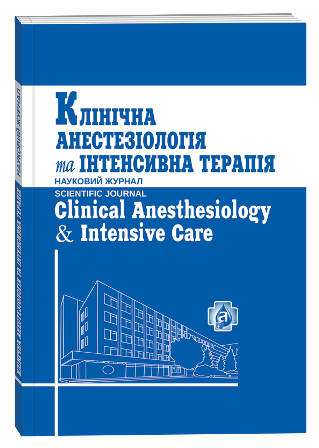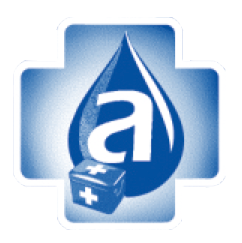CORRECTION OF THE HEMOSTASIS SYSTEM USING EXTRACORPOREAL METHODS IN PATIENTS WITH DRUG ADDICTION SYNDROME
Keywords:
diagnosis, opioid addiction, membrane plasmapheresis, hypercoagulationAbstract
The continuous growth of drug addiction in Ukraine, leads to an increase in morbidity and mortality among the younger working population. Medical disorders were the cause of death in 60% of drug addicts. The use of membrane plasmapheresis removes from circulation activators of hemostatic products paracoagulation, activated blood factors cause hemodilution and red blood cells deplasmoration, which helps to improve blood rheology and microcirculation and eliminates the blockade of phagocytic macrophages. The efficiency of membrane plasmapheresis methods application in the correction of the hemostatic system in 30 patients aged 24–38 years with the opioid dependence syndrome. It was appreciated the opportunity to use the blood rheological properties analyzer ARP-01M “Mednord”. On the basis of laboratory studies, hypercoagulation changes in the hemostatic system were observed in patients with opioid dependence syndrome. Spacing plasmapheresis session was 1–2 days plasmoexfusion volume was 600–800 ml, remote plasma substitution performed isotonic sodium chloride solution (0.9%). The use of membrane plasmapheresis removes from circulation activators of hemostatic products paracoagulation, activated blood factors cause hemodilution and deplasmation of red blood cells, which helps to improve blood rheology and microcirculation and eliminates phagocytic macrophages blockade. A positive effect of membrane plasmapheresis after 3 sessions was observed in patients of this group: improvement of rheological properties of blood, treatment of signs of disseminated intravascular coagulation. Analysis of the results leads to further expansion of indications for diagnostic hemostasis of the hardware complex ARP-01M “Mednord”.
References
Воинов В. А. Место мембранного плазмафереза в наркологии / В. А. Воинов // Современные проблемы наркологии. – Астрахань, 2007. – С. 60–64.
Трансмуральный инфаркт миокарда у молодых больных с неизмененными коронарными артериями, принимавших метадон / Д. Г. Иоселиани, С. П. Семитко, Д. Г. Громов [и др.] // Кардиология. – 2004. – № 10. – С. 107–112.
Катюхин В. Н. Поражение легких и сердца у опийных наркоманов на фоне септицемии / В. Н. Катюхин, Е. В. Кондакова // Клиническая медицина. – 2006. – № 7. – С. 36–39.
Эфферентные методы детоксикации в токсикологии / А. Ф. Михайленко, Н. Д. Шинкаренко, А. П. Гедо [и др.] // Біль, знеболювання і інтенсивна терапія. – 2012. – № 1 (Дод.). – С. 333–334.
Лабораторные методы исследования системы гемостаза и диагностика нарушения гемокоагуляции : учеб. пособие / Ю. В. Первушин, С. Ш. Рогова, Н. И. Ковалевич [и др.]. – Москва, 2009.
Новый метод в исследовании функционального состояния системы регуляции агрегатного состояния крови / О. А. Тарабрин, И. И. Тютрин, А. В. Туренко [и др.] // Інтегративна антропологія. – 2011. – № 2 (18). – С. 37–40.







